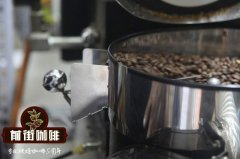Ethiopia West Dharma Flower Queen
Huakui treatment plant is located in buku abel village, which is 2200 meters above sea level. In the harvest and treatment season (December-January), its unique growth environment and natural climate created the unique flavor of Huakui. The sugar content of the red fructose we are picking is more than 30 before we start sun treatment. In the first two days of the sun, we should ensure the humidity of the red fruit so that the fructose begins to ferment fully. At the same time, the high-altitude geographical location, so that the night temperature of the treatment plant can be reduced to about 12 degrees Celsius, and will not produce the smell of excessive fermentation because the temperature is too high. When the temperature is relatively high at noon, we will cover in time to prevent sunburn of red fruit.
In order to prevent sudden rain at night, it will be wrapped in thick plastic sheeting. In this way, the red fruit is fermented and dehydrated at a lower temperature. After 18 days of sun treatment, when the moisture content of raw coffee beans is reduced to about 13%, stop sun treatment, put it in sacks, put it in the warehouse under natural conditions of 12-22 degrees Celsius and 40-50% humidity, raise raw beans and further dehydrate for about 50 days. When the moisture content of raw beans reaches about 10, the transportation treatment plant will be shelled and screened for sale.
Coffee producing countries: Africa Africa, Ethiopia Ethiopia
Coffee Manor: Guji Guji, Hambella Wamena area, Dimtu City, buku able Manor
Coffee variety: Heirloom, native to Ethiopia
Production altitude: 2250-2350m
Quality level: G1
Treatment: Natural tanning (African drying bed)
Factory name: coffee factory address: Guangzhou Yuexiu District Baoqian Street 10 Qianjie Cafe manufacturer contact: 20-38364473 shelf life: 90 net content: 227g Packaging: raw and ripe degree of bulk coffee beans: whether coffee beans contain sugar: sugar-free origin: Ethiopia baking degree: light roasting Ethiopian Sidamo Shakisso Natural
Country: Ethiopia
Producing area: Guji region
Altitude: 2250-2350
Treatment: insolation
Variety: local native species Heirloom
Producer: local small farmers
Flavor: passion fruit, rose, strawberry jam
The coffee flavor of Sidamo is very diverse, because of the different soil composition, regional microclimate and countless native coffee varieties, the coffee produced in each urban area has obvious differences and characteristics. The Sidamo producing area (Sidama) is located in southern Ethiopia. The industry here is dominated by agriculture, and the coffee-growing area is located around the East African Great Rift Valley (Great Rift Valley). The coffee flavor of Sidamo is very diverse, because of the different soil composition, regional microclimate and countless native coffee varieties, the coffee produced in each urban area has obvious differences and characteristics. The Sidamo producing area (Sidama) is located in southern Ethiopia. The industry here is dominated by agriculture, and the coffee-growing area is located around the East African Great Rift Valley (Great Rift Valley).
In Ethiopia, Japanese beans are usually found, such as small stones or twigs, so special attention should be paid to grinding. Of course, there are these small shortcomings, but it does not affect his taste, the most worth mentioning is that sidamo's extra-low mocha caffeine is a natural decaf coffee, try Japanese coffee, feel the wild and unrestrained desert taste.
Important Notice :
前街咖啡 FrontStreet Coffee has moved to new addredd:
FrontStreet Coffee Address: 315,Donghua East Road,GuangZhou
Tel:020 38364473
- Prev

Introduction of single-origin coffee in Honduras introduction to the grading standard of Honduran coffee beans
Professional coffee knowledge exchange more coffee bean information please follow the coffee workshop (Wechat official account cafe_style) Honduras was previously less well-known in the consumer market due to the lack of strong support in the handling and transportation of raw beans. In recent years, Honduras has actively changed and expanded its coffee industry, which has gradually opened up the knowledge of Honduran coffee in the international community.
- Next

What are the coffee producing areas in Tanzania? Flavor characteristics and story introduction of coffee beans in Tanzania
Professional coffee knowledge exchange more coffee bean information please follow the coffee workshop (Wechat official account cafe_style) Tanzania Tansania population: 44929000 Tansania produces a reasonable number of Robots beans, concentrated in the northwest, near Lake Victoria. The rest of the area uses the nature of high altitude to grow coffee beans. Tanzania Tanzania Tanzania
Related
- Detailed explanation of Jadeite planting Land in Panamanian Jadeite Manor introduction to the grading system of Jadeite competitive bidding, Red bid, Green bid and Rose Summer
- Story of Coffee planting in Brenka region of Costa Rica Stonehenge Manor anaerobic heavy honey treatment of flavor mouth
- What's on the barrel of Blue Mountain Coffee beans?
- Can American coffee also pull flowers? How to use hot American style to pull out a good-looking pattern?
- Can you make a cold extract with coffee beans? What is the right proportion for cold-extracted coffee formula?
- Indonesian PWN Gold Mandrine Coffee Origin Features Flavor How to Chong? Mandolin coffee is American.
- A brief introduction to the flavor characteristics of Brazilian yellow bourbon coffee beans
- What is the effect of different water quality on the flavor of cold-extracted coffee? What kind of water is best for brewing coffee?
- Why do you think of Rose Summer whenever you mention Panamanian coffee?
- Introduction to the characteristics of authentic blue mountain coffee bean producing areas? What is the CIB Coffee Authority in Jamaica?

